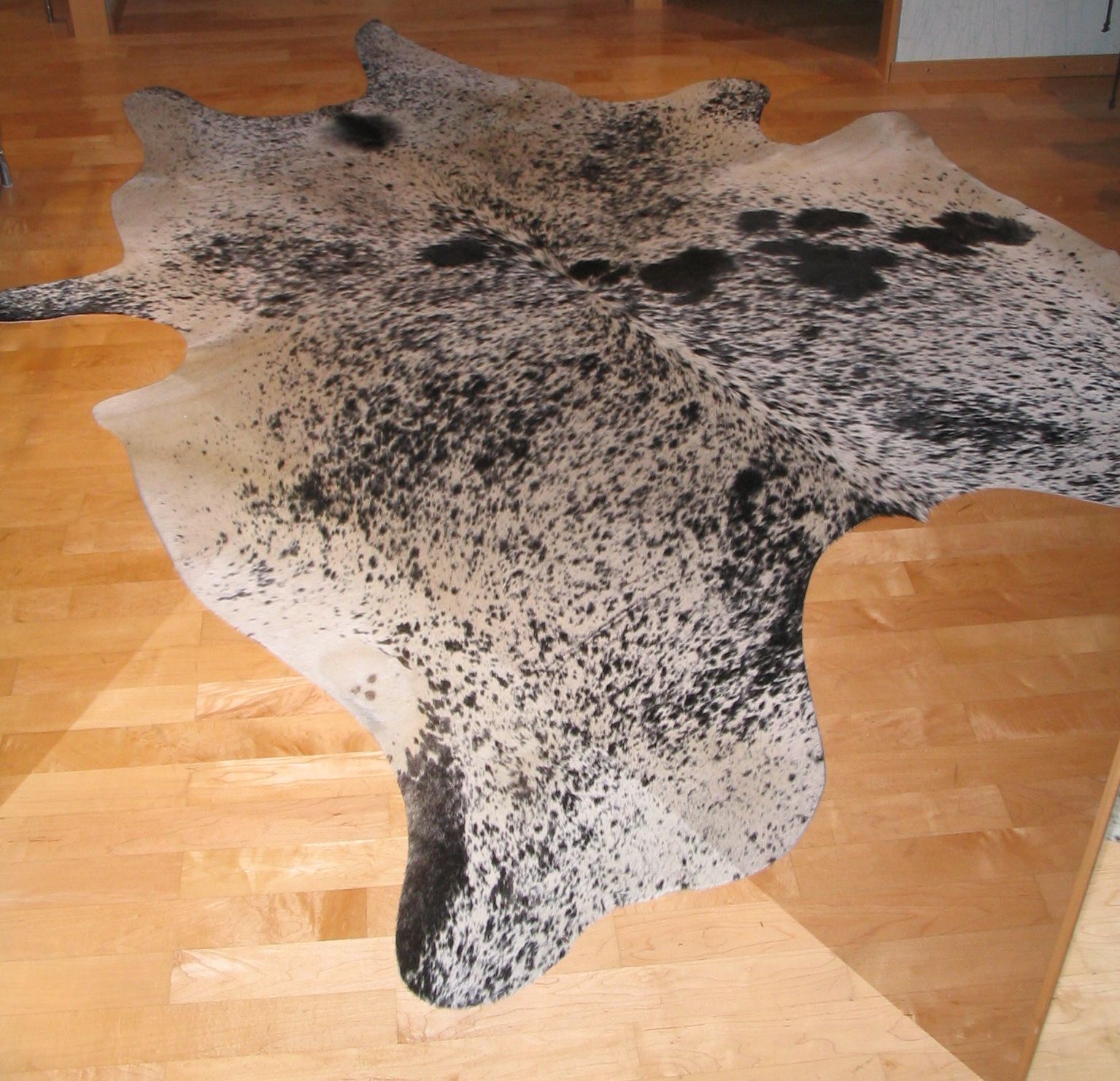cowhide on:
[Wikipedia]
[Google]
[Amazon]
 Cowhide is the natural, unbleached skin and hair of a cow. It retains the original coloring of the animal. Cowhides are a product of the
Cowhide is the natural, unbleached skin and hair of a cow. It retains the original coloring of the animal. Cowhides are a product of the
 Among the southern African Zulu people, cowhide was employed in various ways, though it has recently been relegated to ceremonial use. Cowhide was used to make
Among the southern African Zulu people, cowhide was employed in various ways, though it has recently been relegated to ceremonial use. Cowhide was used to make
 Cowhide is the natural, unbleached skin and hair of a cow. It retains the original coloring of the animal. Cowhides are a product of the
Cowhide is the natural, unbleached skin and hair of a cow. It retains the original coloring of the animal. Cowhides are a product of the food industry
The food industry is a complex, global network of diverse businesses that supplies most of the food consumed by the world's population. The food industry today has become highly diversified, with manufacturing ranging from small, traditional, ...
from cattle
Cattle (''Bos taurus'') are large, domesticated, cloven-hooved, herbivores. They are a prominent modern member of the subfamily Bovinae and the most widespread species of the genus '' Bos''. Adult females are referred to as cows and adult ...
. Cowhide is frequently processed into leather
Leather is a strong, flexible and durable material obtained from the tanning, or chemical treatment, of animal skins and hides to prevent decay. The most common leathers come from cattle, sheep, goats, equine animals, buffalo, pigs and hog ...
.
Process
Once a cow has been killed, the skin is removed. It is then selected in the raw state, at the very first moment when it is salted. It is organized by size and color. In thetannery
Tanning may refer to:
*Tanning (leather), treating animal skins to produce leather
*Sun tanning, using the sun to darken pale skin
**Indoor tanning, the use of artificial light in place of the sun
**Sunless tanning, application of a stain or dye t ...
, a traditional hair on hide tanning method is employed to ensure that the hide is soft, and less susceptible to odour
An odor (American English) or odour (Commonwealth English; see spelling differences) is caused by one or more volatilized chemical compounds that are generally found in low concentrations that humans and animals can perceive via their sens ...
and moulting
In biology, moulting (British English), or molting (American English), also known as sloughing, shedding, or in many invertebrates, ecdysis, is the manner in which an animal routinely casts off a part of its body (often, but not always, an outer ...
. It ensures that the cowhide will last longer. It is then naturally dried and the best hides are separated from the rest, with the ones that cannot be used in full as decorative items separated to be used as patchwork
Patchwork or "pieced work" is a form of needlework that involves sewing together pieces of fabric into a larger design. The larger design is usually based on repeating patterns built up with different fabric shapes (which can be different colors) ...
rugs. These are usually those with damage (for example cuts and other injuries to the skin during the life of the animal) that causes the skin to tear post drying.
Use
Cowhide can bedyed
Dyeing is the application of dyes or pigments on textile materials such as fibers, yarns, and fabrics with the goal of achieving color with desired color fastness. Dyeing is normally done in a special solution containing dyes and particular ...
to resemble skins such as tiger
The tiger (''Panthera tigris'') is the largest living Felidae, cat species and a member of the genus ''Panthera''. It is most recognisable for its dark vertical stripes on orange fur with a white underside. An apex predator, it primarily pr ...
or zebra
Zebras (, ) (subgenus ''Hippotigris'') are African equines with distinctive black-and-white striped coats. There are three living species: the Grévy's zebra (''Equus grevyi''), plains zebra (''E. quagga''), and the mountain zebra (''E. zebr ...
skins, but dyeing is usually reserved for the lower quality cowhides. The best quality hides are usually presented in their natural colors, which are based on the breed of the bovine.
Nguni culture
 Among the southern African Zulu people, cowhide was employed in various ways, though it has recently been relegated to ceremonial use. Cowhide was used to make
Among the southern African Zulu people, cowhide was employed in various ways, though it has recently been relegated to ceremonial use. Cowhide was used to make Nguni shield
A Nguni shield is a traditional, pointed oval-shaped, ox or cowhide shield which is used by various ethnic groups among the Nguni people of southern Africa. Currently it is used by diviners or for ceremonial and symbolic purposes, and many are pr ...
s and the traditional skirt called the '' isidwaba''. Men wore a calfskin flap, the ''ibeshu'', to cover the buttocks, and the ''umutsha'' loin cloth was tied to the body with a cow hide belt. The ''iphovela'' was a headdress made of cow skin, and the ''ishoba'' or ''umshokobezi'' was a tufted cowtail used as an arm or leg decoration.
References
Leather {{textile-stub